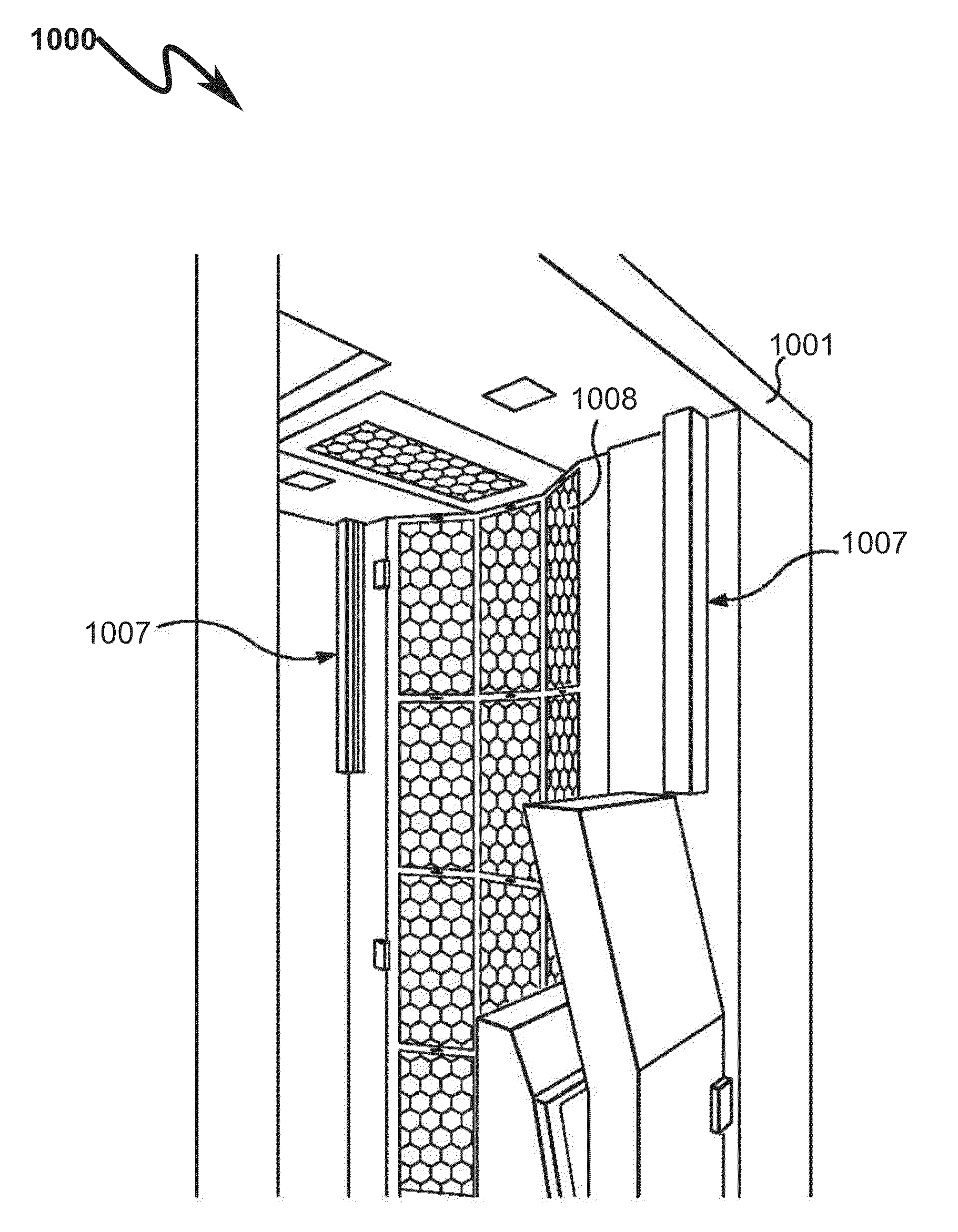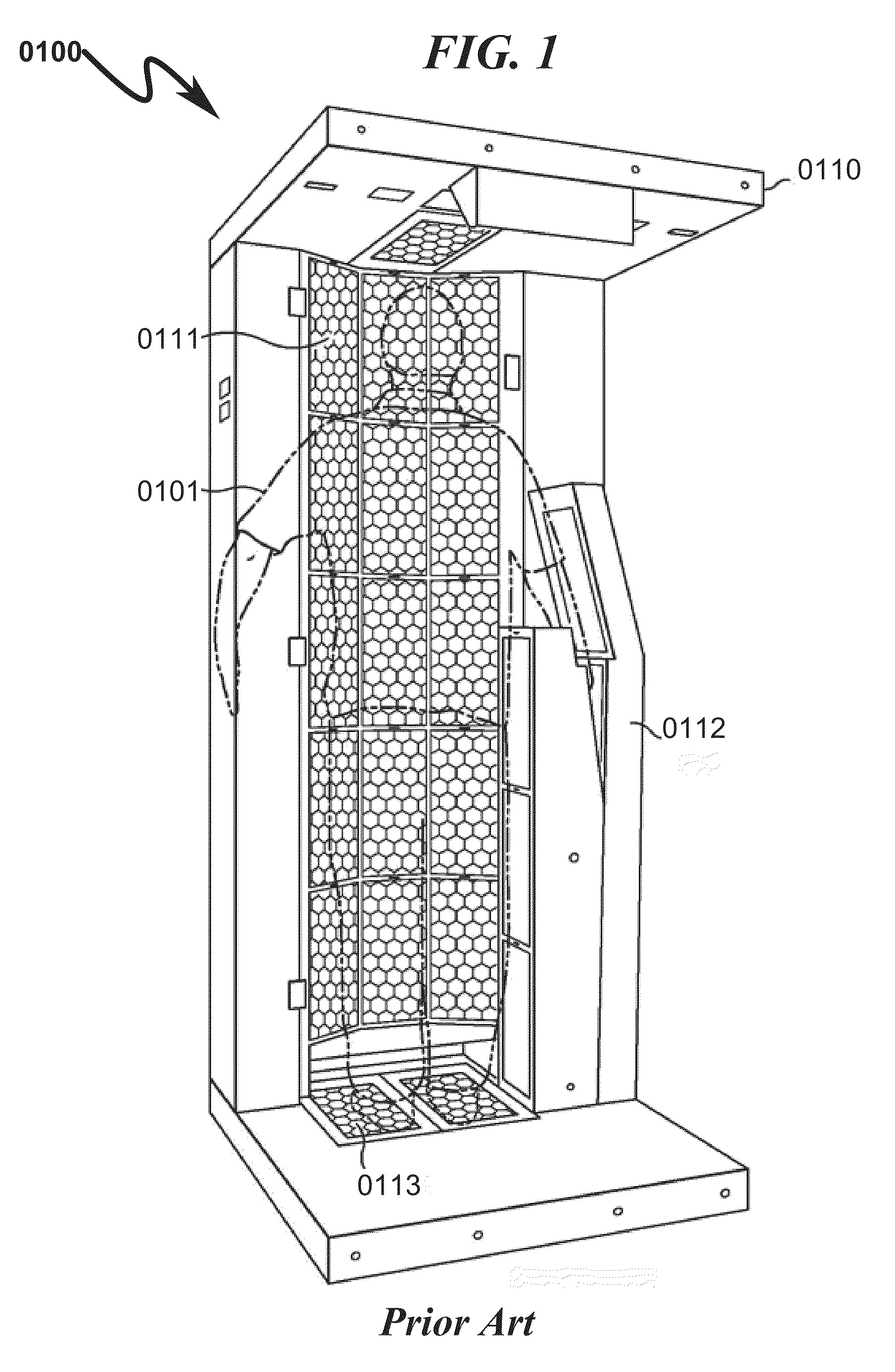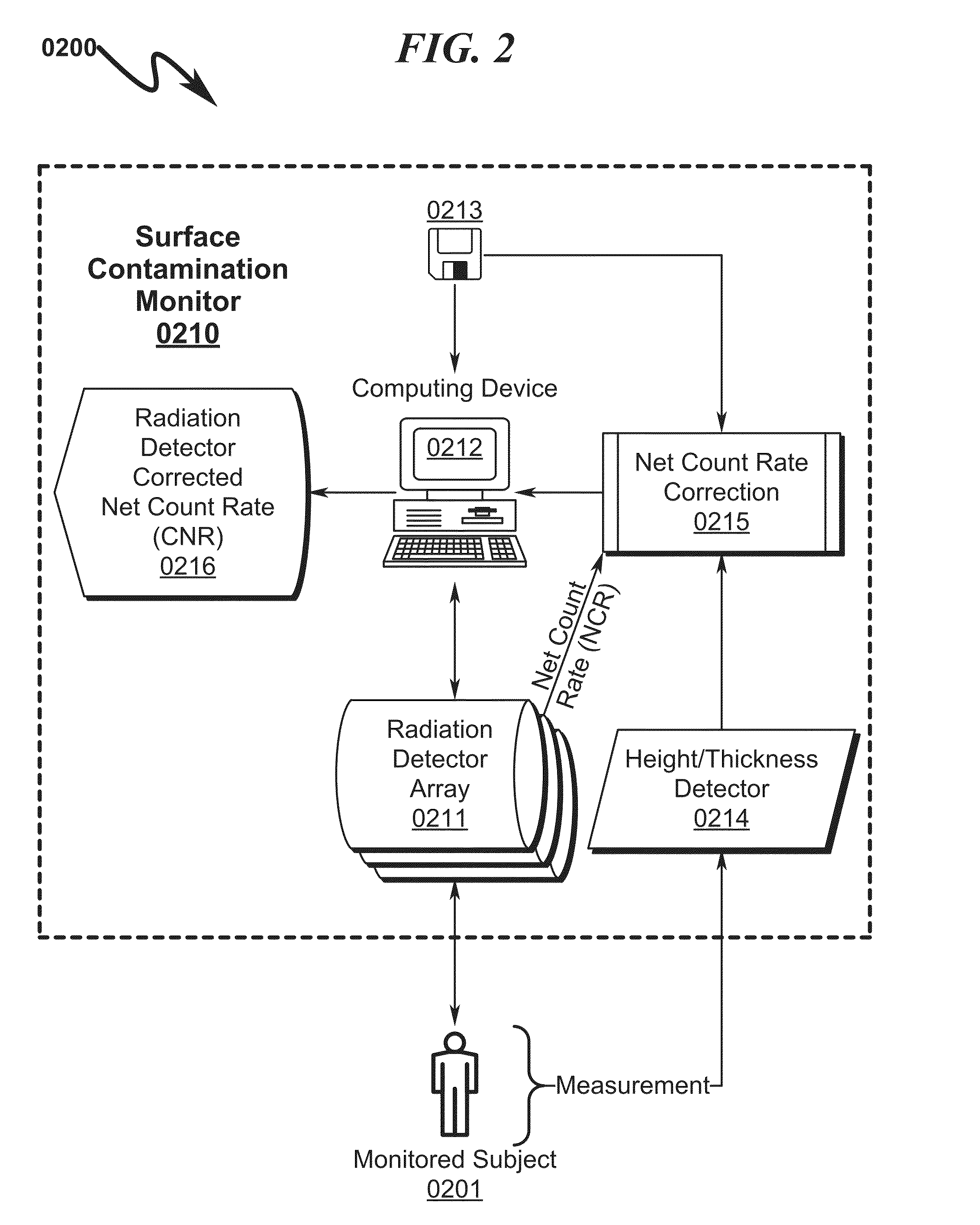Surface Contamination Monitoring System and Method
a surface contamination and monitoring system technology, applied in the direction of optical radiation measurement, instruments, calibration apparatus, etc., can solve the problems of affecting the sensitivity and accuracy of the surface contamination monitoring device, not taking into account the effects of varying body shapes and sizes, and the average “standard” monitored subject profile does not compensate, so as to accurately characterize the local background
- Summary
- Abstract
- Description
- Claims
- Application Information
AI Technical Summary
Benefits of technology
Problems solved by technology
Method used
Image
Examples
embodiment
Preferred Embodiment Method Summary
[0197]The present invention preferred exemplary method embodiment anticipates a wide variety of variations in the basic theme of implementation, but can be generalized as a surface contamination monitoring method operating under control of a computerized computing device, the method comprising the steps of:[0198](1) accepting outputs from a radiation detector array configured to monitor radioisotope surface-contamination of a monitored subject;[0199](2) computing a corrected net count rate (CNR) based upon the net count rate (NCR) output of the radiation detector array;[0200](3) determining if the CNR exceeds a predetermined alarm threshold;[0201](4) if the alarm threshold has been exceeded, signaling a monitored subject contamination alarm and proceeding to step (6);[0202](5) otherwise signaling a monitored subject clean status; and[0203](6) terminating the contamination monitoring method; wherein[0204]the CNR comprises a self-shielding correction...
PUM
 Login to View More
Login to View More Abstract
Description
Claims
Application Information
 Login to View More
Login to View More - R&D
- Intellectual Property
- Life Sciences
- Materials
- Tech Scout
- Unparalleled Data Quality
- Higher Quality Content
- 60% Fewer Hallucinations
Browse by: Latest US Patents, China's latest patents, Technical Efficacy Thesaurus, Application Domain, Technology Topic, Popular Technical Reports.
© 2025 PatSnap. All rights reserved.Legal|Privacy policy|Modern Slavery Act Transparency Statement|Sitemap|About US| Contact US: help@patsnap.com



